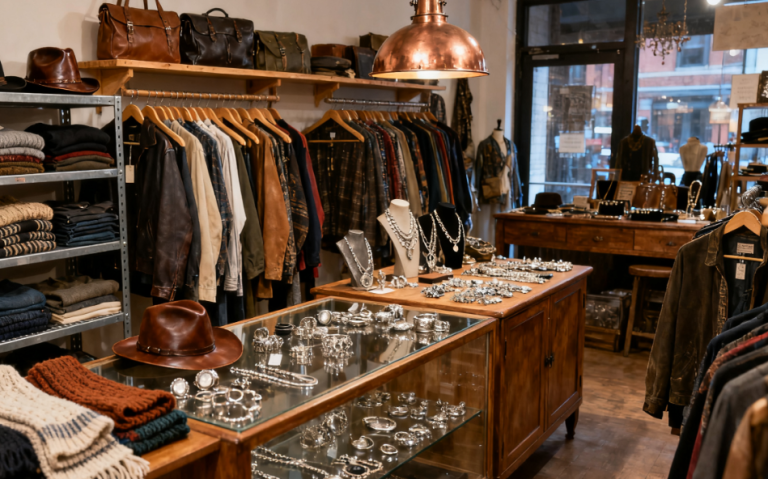
The fashion industry has long been criticized for its rapid production cycles, wasteful practices, and often questionable labor conditions. However, a significant shift is underway as more consumers become aware of the environmental and social costs behind fast fashion. This awareness has sparked the rise of the slow fashion movement — a philosophy that emphasizes sustainability, ethical manufacturing, and mindful consumption. Slow fashion is not just a trend but a revolutionary approach that is reshaping how apparel is designed, produced, and purchased. In this exploration, we will uncover how conscious consumers are driving this transformation and what it means for the future of fashion.
The Rise of Conscious Consumerism in Fashion
In recent years, there has been an undeniable increase in consumers who prioritize values over mere aesthetics or price tags. The concept of conscious consumerism has taken hold, with shoppers seeking out brands that offer transparency, ethical labor practices, and environmentally friendly materials. Keywords like “sustainable fashion brands,” “ethical clothing,” and “eco-friendly fabrics” are more than marketing buzzwords — they represent a growing demand that challenges traditional fast fashion paradigms.
Conscious consumers recognize that every purchase has a footprint, whether it’s the water consumption involved in cotton production or the carbon emissions from overseas shipping. This awareness fuels a preference for garments that are crafted with care, using organic cotton, recycled fibers, or innovative materials like Tencel and hemp, which minimize environmental harm. Moreover, buyers are increasingly interested in “slow fashion benefits” such as durability, timeless design, and repairability. These elements ensure that clothes last longer, reducing the need for constant replacement.
Ethical Manufacturing as a Cornerstone
Beyond the environment, the slow fashion movement is fundamentally rooted in ethics. The traditional apparel industry has often depended on sweatshops and unfair wages to maintain low costs and rapid output. Conscious consumers are actively seeking brands committed to “fair trade clothing” and safe working conditions. This demand has encouraged companies to become more transparent about their supply chains, showcasing their efforts to promote “ethical manufacturing practices” and empower garment workers.
Transparency in production is no longer optional for forward-thinking brands; it is a requirement that earns consumer trust and loyalty. Certifications like Fair Trade and Global Organic Textile Standard (GOTS) provide reassurance that clothing is produced responsibly. The integration of these standards signals a profound shift where human dignity and environmental stewardship intersect, creating a more equitable apparel ecosystem.
Designing with Sustainability in Mind
The slow fashion ethos also transforms the design process itself. Instead of chasing fleeting trends, designers focus on creating versatile, “timeless fashion” pieces that transcend seasons. This approach reduces waste caused by overproduction and unsold inventory — major issues in fast fashion. By prioritizing quality over quantity, slow fashion brands offer garments that maintain their appeal and integrity over time.
Material innovation plays a crucial role in sustainable design. Brands experiment with “organic cotton,” “recycled polyester,” and “natural dyes” to minimize harmful chemicals and synthetic waste. These choices not only benefit the planet but also appeal to consumers who want their wardrobes to reflect their values. Moreover, advances in “circular fashion” encourage designers to consider end-of-life garment recyclability, closing the loop in apparel consumption.
The Power of Local and Artisanal Craftsmanship
Slow fashion also celebrates locality and craftsmanship. By supporting “locally made clothing” and “handcrafted fashion,” consumers help reduce the carbon footprint associated with long-distance shipping and mass production. This focus on local artisanship often means higher quality garments that embody cultural heritage and unique artistry, creating a deeper connection between wearer and wardrobe.
Consumers who invest in these pieces appreciate the narrative behind their clothes, valuing stories of skilled craftsmanship and traditional techniques. This emotional connection reinforces the slow fashion philosophy, where shopping becomes an act of mindful engagement rather than impulsive consumption.
Technology’s Role in Empowering Slow Fashion
While slow fashion emphasizes tradition and mindfulness, technology is also a powerful ally. Digital platforms enable brands to educate consumers about sustainability and ethical practices through transparency tools like blockchain-based supply chain tracking. Social media amplifies the voices of conscious shoppers and sustainable influencers who champion eco-friendly apparel choices.
Innovations in fabric technology, such as biodegradable textiles and waterless dyeing techniques, push the boundaries of what sustainable fashion can achieve. These advancements are transforming the industry, making it easier for brands to reduce their environmental impact without sacrificing style or quality.
Reimagining Consumer Habits for Longevity
At the heart of slow fashion is a shift in consumer behavior. The emphasis moves from quantity to quality, encouraging buyers to curate their wardrobes with intention. Keywords like “wardrobe essentials,” “minimalist fashion,” and “sustainable style” encapsulate this lifestyle transformation. Instead of purchasing numerous cheap items, shoppers focus on acquiring fewer, better-made pieces that suit their needs and aesthetics.
This shift also includes embracing “clothing repair” and “upcycling” practices, extending the life cycle of garments. Consumers are becoming more resourceful, learning basic sewing skills or seeking professional alteration services. The rise of “clothing rental” and “secondhand shopping” also aligns with slow fashion values, allowing fashion lovers to enjoy variety without waste.
The Impact on Retail and Fashion Marketing
The slow fashion movement is influencing how brands market and sell apparel. Retailers now highlight sustainability credentials and ethical sourcing in their campaigns, attracting a growing demographic of eco-conscious shoppers. The use of “green marketing” strategies underscores commitments to reducing carbon footprints and supporting fair labor practices.
E-commerce platforms also adapt, offering curated collections of sustainable and ethical clothing. Subscription boxes featuring slow fashion brands allow consumers to explore conscious shopping conveniently. This digital evolution reflects a market increasingly attuned to the values behind the products they buy.
Challenges and Future Outlook
Despite the momentum, slow fashion faces challenges in scaling its impact. Higher production costs and longer lead times make sustainable apparel less accessible for some consumers. Balancing affordability with ethical standards remains a complex task for many brands. However, increased demand is driving innovation and encouraging investment in more efficient sustainable practices.
The future of fashion lies in continued collaboration between brands, consumers, and policymakers. Education about the true cost of fast fashion and incentives for sustainable production will further accelerate this transformation. Conscious consumers, armed with knowledge and intention, are the catalysts for a more responsible and stylish apparel industry.
Embracing slow fashion invites us to reconsider our relationship with clothing, encouraging us to cherish what we wear and advocate for a planet-friendly wardrobe. The revolution is not just in garments but in mindset, creating a ripple effect that promises a more ethical, sustainable future for fashion lovers everywhere.



